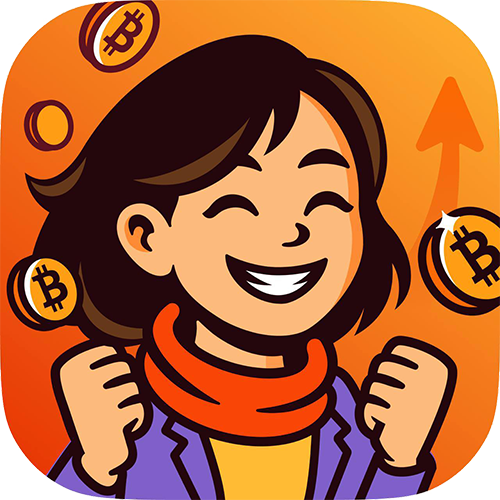Understanding Blockchain: A Beginner's Guide
What's All the Buzz About?
Ever wondered why everyone's talking about blockchain? Or why Bitcoin and other cryptocurrencies are such a big deal? It all starts with understanding one revolutionary technology.
Don't worry if blockchain sounds complicated – by the end of this article, you'll not only get what it is, but you'll also see why it might change the way we handle everything from money to medical records!
Don't worry if blockchain sounds complicated – by the end of this article, you'll not only get what it is, but you'll also see why it might change the way we handle everything from money to medical records!
What Is Blockchain? Think Digital Super-Notebook
Imagine a magical notebook with three amazing powers:
That's essentially what blockchain is – a digital ledger (fancy word for record book) that's shared across a network of computers around the world. When someone makes a transaction or adds information, that data gets stored in a "block." Once a block is filled with information, it's sealed and linked to the previous block–creating a "chain" of blocks.
Hence the name: blockchain! 🔗
- Everyone gets an identical copy - Thousands of computers worldwide have the exact same record
- Anyone can read what's inside - It's completely transparent and public
- Once something is written, it's permanent - No erasing, no editing, no cheating!
That's essentially what blockchain is – a digital ledger (fancy word for record book) that's shared across a network of computers around the world. When someone makes a transaction or adds information, that data gets stored in a "block." Once a block is filled with information, it's sealed and linked to the previous block–creating a "chain" of blocks.
Hence the name: blockchain! 🔗
Why Should You Care? Trust Without Middlemen
Think about how you normally trust that something happened:
When you send money through your bank, you trust the bank to update both accounts correctly.
When you buy something online, you trust the company to process your payment and ship your item.
Blockchain flips this idea on its head. Instead of trusting one company or person, the verification comes from the entire network. Thousands of computers all check and agree: "Yes, this transaction happened exactly this way."
It's like having thousands of witnesses to every transaction instead of just taking one person's word for it!
When you send money through your bank, you trust the bank to update both accounts correctly.
When you buy something online, you trust the company to process your payment and ship your item.
Blockchain flips this idea on its head. Instead of trusting one company or person, the verification comes from the entire network. Thousands of computers all check and agree: "Yes, this transaction happened exactly this way."
It's like having thousands of witnesses to every transaction instead of just taking one person's word for it!

A Quick Look Back: Where Did Blockchain Start?
The concept of blockchain first appeared in 2008 – during the global financial crisis when trust in banks was at an all-time low. A mysterious figure named Satoshi Nakamoto introduced the idea in a whitepaper while launching Bitcoin, the first-ever cryptocurrency.
The goal? To create a system where people could exchange value without relying on banks or middlemen, using a public, trustless, and tamper-proof network.
That system was blockchain – and it's what made Bitcoin possible. By solving the problem of how to create digital money that couldn't be copied or "double-spent," Satoshi sparked a technological revolution that's still unfolding today.
The goal? To create a system where people could exchange value without relying on banks or middlemen, using a public, trustless, and tamper-proof network.
That system was blockchain – and it's what made Bitcoin possible. By solving the problem of how to create digital money that couldn't be copied or "double-spent," Satoshi sparked a technological revolution that's still unfolding today.
What Makes Blockchain So Special?
Here's what makes blockchain different from traditional systems:
- Decentralized – Power to the PeopleNo single person or institution is in charge. Instead of one company's servers (like Facebook or your bank), blockchain runs on thousands of computers worldwide. If one part fails, the system keeps running.
- Secure – Fort Knox for DataInformation is protected using advanced cryptography (super-strong math puzzles). Plus, to hack the system, you'd need to hack thousands of computers simultaneously – practically impossible!
- Transparent – Glass Walls, Not Black BoxesAnyone can see the data (like a public record). Imagine if you could see exactly how your bank processes your money or how a company uses your data – that's blockchain transparency.
- Immutable – Written in Digital StoneOnce recorded, data can't be altered or deleted. It's like writing in permanent ink, not pencil. This prevents fraud and creates a trustworthy history that can't be rewritten.
- Trustless – Math Over PromisesYou don't need to "trust" anyone; the code and network do the work. Instead of relying on a company's promise, you rely on mathematics and computer science – much more reliable!
In other words, blockchain allows people to agree on information – even if they don't know or trust each other. It's like having a referee that everyone agrees is perfectly fair.
Where Is Blockchain Used? Far Beyond Bitcoin
While blockchain was originally created to power Bitcoin, its use has now gone way beyond crypto:
- CryptocurrenciesDigital currencies like Bitcoin, Ethereum, and thousands of others use blockchain to track who owns what without needing banks.
- Supply Chain ManagementCompanies like Walmart and Maersk use blockchain to trace products from factory to store. Want to know if your coffee is really fair trade or if your medicine is authentic? Blockchain can prove it.
- Voting SystemsSome regions are testing blockchain-based voting that can't be tampered with and provides instant verification – making elections more secure and transparent.
- HealthcareImagine having your complete medical history securely available to any doctor you visit, while you control who sees it. Blockchain makes this possible while keeping your data safe.
- Digital IdentityInstead of trusting Google or Facebook with your personal information, blockchain could let you own and control your digital identity – sharing only what you want, when you want.
- NFTs (Non-Fungible Tokens)Those digital art pieces selling for millions? They use blockchain to prove ownership and scarcity in the digital world – something impossible before blockchain.
Basically, anywhere that needs secure, verified data that no one can mess with – blockchain can revolutionize how things work.
Recap: What Is Blockchain in Simple Terms?
Let's break it down one more time:
- Blockchain = a secure, public, digital notebookIt records transactions and information that everyone can see but no one can alter.
- Each block holds a group of transactionsThink of it like a page in that notebook, filled with entries.
- Those blocks are linked to form a chainEach new page references the previous one, creating an unbreakable sequence.
- It's decentralized – no single person or group controls itThe notebook has thousands of identical copies spread worldwide.
- Data on it can't be changed, making it trustworthyOnce written, the ink never fades and can't be erased.
- Originally built for Bitcoin, but now used in many industriesWhat started as a solution for digital money is now transforming everything from art to healthcare.
The most exciting part? We're still in the early days of blockchain technology. Many compare it to the internet in the early 1990s – full of potential that we're just beginning to understand!
Experience Blockchain in Action with CryptoNanny Academy
Curious about how blockchain works in crypto trading – but not ready to use real money yet?
Download the CryptoNanny Academy app today to explore our interactive Blockchain Simulator where you can see blocks forming in real-time and understand how the verification process works. Practice trading crypto in a risk-free environment, understand blockchain step-by-step, and join weekly tournaments to test your skills.
Complete quizzes to earn rewards and unlock exclusive educational content about blockchain technology. Don't just read about the blockchain revolution – be part of it!
📲 Download CryptoNanny Academy on Google Play
And join our Telegram community for tips, updates, and beginner-friendly content:
👉 t.me/@cryptonannyapp
Download the CryptoNanny Academy app today to explore our interactive Blockchain Simulator where you can see blocks forming in real-time and understand how the verification process works. Practice trading crypto in a risk-free environment, understand blockchain step-by-step, and join weekly tournaments to test your skills.
Complete quizzes to earn rewards and unlock exclusive educational content about blockchain technology. Don't just read about the blockchain revolution – be part of it!
📲 Download CryptoNanny Academy on Google Play
And join our Telegram community for tips, updates, and beginner-friendly content:
👉 t.me/@cryptonannyapp
CryptoNanny Academy is an educational simulation game. It does not involve real money transactions, nor should its content be considered financial or investment advice. Always conduct personal research and consult financial professionals before making real investment decisions.

